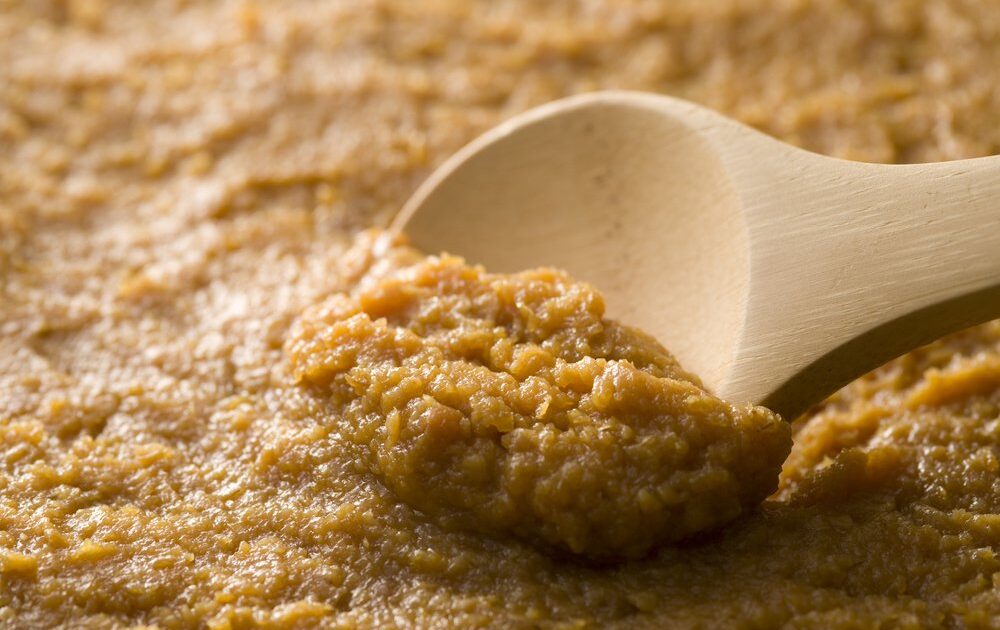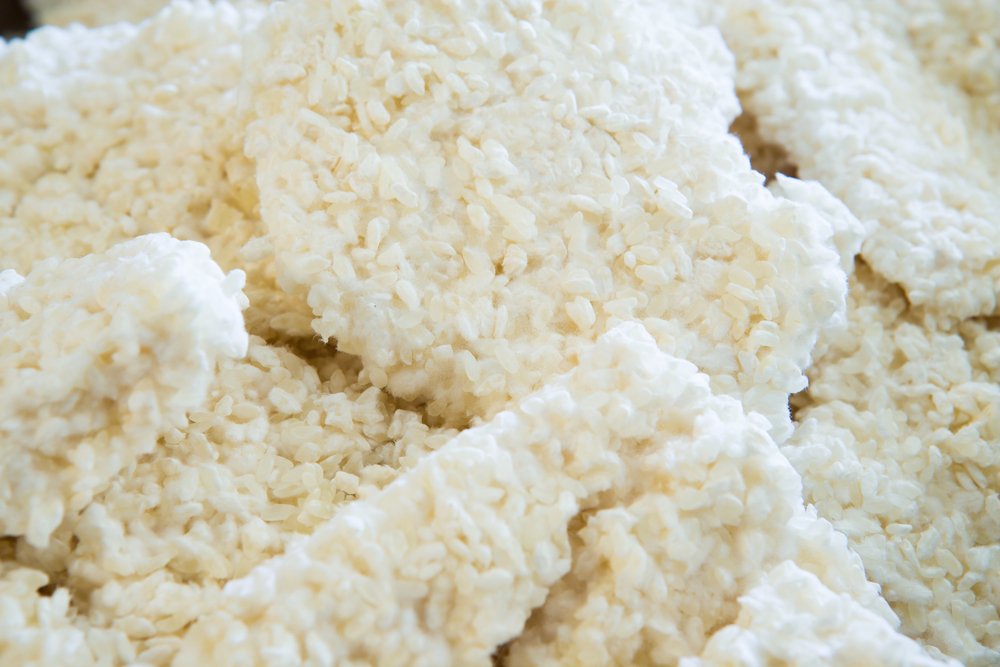What is Koji? Meet Your New Favorite Seasoning

Have you heard of koji yet? This Japanese product was identified by both Urban Cultivator and Bon Appétit as a trendy food to watch in 2016, but most people have no idea what it is, much less how to use it. The strange thing is, you’ve probably had it before.
So, what is koji?
Koji is a fermented Japanese product made by treating rice with Aspergillus oryzae, a mold that adds a distinct flavor to the rice, which is then used as the backbone for such Japanese condiments as miso paste, soy sauce, sake, and many tsukemono, or Japanese pickles.
Koji is thousands of years old, but it has been experiencing a renaissance in Japan over the past few years, and it’s even being used stateside by Mission Chinese Food to cure chicken meat. Trentina in Cleveland uses it to season scallops. It’s about time it graced our kitchens, too.

Koji image via Shutterstock
What Does Koji Taste Like?
According to Elizabeth Andoh, author of KANSHA and director of the Taste of Culture culinary arts program in Tokyo, koji is almost impossible to translate into English, much less describe. Andoh says that the product adds flavor by “mellowing and rounding harsh flavors, and slightly (…) bringing out the sweeter notes, because chemically what it does is convert certain carbohydrates and starches into sugars.”
Seems complicated, huh? It’s always hard to describe a new flavor, which is why so many are quick to rely on that Japanese catch-all umami, which has been used to death, as far as Andoh is concerned. Despite umami’s misuse, it is appropriate to discuss it when it comes to koji, which does not necessarily add flavor to dishes but, like umami, brings out flavor that is already there.
She cites the comparison of a plain raw cucumber, a salted raw cucumber, and one that has been rubbed with koji, all left to marinate for 15 minutes.
“The plain cucumber is going to taste very garden green, and the one that had salt rubbed on it is going to taste like a good salad, and the one that had the koji rubbed on it is going to taste like, “Wow! That’s a cucumber?”
It is not a flavor that can be added, then, but rather an enhancement of flavors that were already present in the base ingredient.
Where Can I Find Koji?
Most home cooks won’t want to buy the pure product, but rather the derivative shio koji, a salt replacement that brings out the natural flavors in whatever you would like to prepare.
“If you’re going to be using it in the home kitchen, if you’re not about to go set up a brewery for sake or production lines for miso or soy sauce, then you’re probably wanting to have shio koji,” says Andoh.
This product is sold in the U.S. by two Japanese companies: Kojiya, a koji specialist, and Marukome, which also produces and sells other Japanese products for the American market, such as miso and soy sauce.
The companies also sell flavored kojis, which Andoh does not recommend. “It’s very difficult to control the fermentation of things with which it’s mixed, whereas shio koji is quite simple to use and very predictable.”
How to Use Koji
Andoh calls koji a “fermenting agent of change.” A natural probiotic, it breaks down starches in foods, tenderizing them and boosting their natural flavors. While the compounds in the product are similarly healthful as those in yogurt, it is generally safe for people who suffer from lactose intolerance to consume, another plus for the Japanese ingredient.
Here are just a few ways to use koji in the kitchen:
- Use about a teaspoon as a marinade for eight ounces of fish, meat, or chicken. Marinate for 15 to 20 minutes before cooking.
- Massage plain cucumbers in it for about 10 to 15 minutes; to do this easily, follow Andoh’s tip, and place the cucumbers and the koji in a plastic bag before massaging the two together. Rinse the cucumbers slightly before serving.
Do you use koji already? What’s your favorite way? Let us know on our Facebook page or Tweet us @organicauthorit.
Related on Organic Authority
What to Eat for Breakfast: A Recipe for Japanese Tea and Rice Soup
MSG FREE, It’s Not as Clear as It Seems
The Fifth Flavor: A Brief History of Umami & MSG
Miso paste image via Shutterstock

